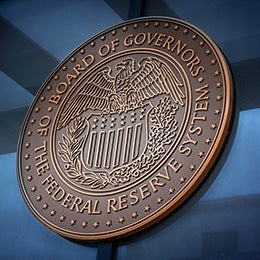
Markets take a wait-and-see approach to US action in Venezuela
A rise in Venezuelan oil production could pressure oil prices in a few years. In the meantime, we expect an accelerating global economy to boost demand for oil and support prices.
The new home of the Invesco Canada blog

Markets take a wait-and-see approach to US action in Venezuela
A rise in Venezuelan oil production could pressure oil prices in a few years. In the meantime, we expect an accelerating global economy to boost demand for oil and support prices.

Above the Noise: Rethinking 2025 narratives
In 2025, clear storylines on the Federal Reserve, AI stocks, and rates captivated us. But the numbers don’t always match the narratives.

Has the catalyst for stock diversification arrived?
For investors looking to diversify their mega-cap technology exposure, improving growth and falling interest rates may be good reasons.

Navigating Fed monetary policy uncertainty and the markets
A rate cut, which markets are pricing in despite Fed member differences, and an expected improving economy in 2026, could support stocks.

All About Private Corporations – Taxation of Active Business Income
Explore the details of earning active business income within a corporation thought the principles of corporate-shareholder tax integration.

2026 Annual Investment Outlook: Resilience and rebalancing
We believe global equities may continue to rise in the new year, and we expect new opportunities to be unlocked as market leadership evolves.

Above the Noise: The K-pop economy
Get insight on the recent sell-off in the artificial intelligence trade, the potential for a Santa Claus rally, and the K-shaped economy.

Market pullback: Healthy reset, not bursting stock bubble
The downturn was concentrated in mega-cap growth stocks, even though many had strong earnings. We see it as skepticism about lofty valuations.

Power of attorney arrangements and beneficiary designations on registered plans
Discover the importance of a power of attorney (POA) document in managing incapacity. Learn about the limitations of a POA, including the attorney's ability to carry over a beneficiary designation from an RRSP to a RRIF.

Tech selloff amplifies the case for diversification
Today’s artificial intelligence trade isn’t a bubble yet, in our view, but the best potential opportunities in stocks may be outside of mega-caps.
NA2252900
Important information
Commissions, management fees and expenses may all be associated with investments in mutual funds and exchange-traded funds (ETFs). Trailing commissions may be associated with investments in mutual funds. For mutual funds the indicatedrates of return are the historical annual compounded total returns, including changes in share/unit value and reinvestment of all distributions, and do not take into account sales, redemption, distribution or optional charges, or income taxes payable by any investor, which would have reduced returns. For ETFs unless otherwise indicated, rates of return for periods greater than one year are historical annual compound total returns including changes in unit value and reinvestment of all distributions, and donot take into account any brokerage commissions or income taxes payable by any unitholder that would have reduced returns. Mutual funds and ETFs are not guaranteed, their values change frequently and past performance may not be repeated. There are risks involved with investing in ETFs and mutual funds. Please read the prospectus before investing. Copies are available from Invesco Canada Ltd. at invesco.ca
Some references are U.S. centric and may not apply to Canada.
The information provided is general in nature and may not be relied upon nor considered to be the rendering of tax, legal, accounting or professional advice. Readers should consult with their own accountants, lawyers and/or other professionals for advice on their specific circumstances before taking any action. The information contained herein is from sources believed to be reliable, but accuracy cannot be guaranteed.
These are the personal views of the author as at the date indicated, and notnecessarily the views of Invesco Canada. The views expressed above are based on current market conditions and are subject to change without notice; they are not intended to convey specific investment advice. Forward-looking statements are not guarantees of performance. They involve risks, uncertainties and assumptions. Although such statements are based on assumptions considered to be reasonable, there can be no assurance that actual results will not differ materially from such expectations.
Products discussed are available to Canadian investors only.
This link takes you to a site not affiliated with Invesco. The site is for informational purposes only. Invesco does not guarantee nor take any responsibility for any of the content.